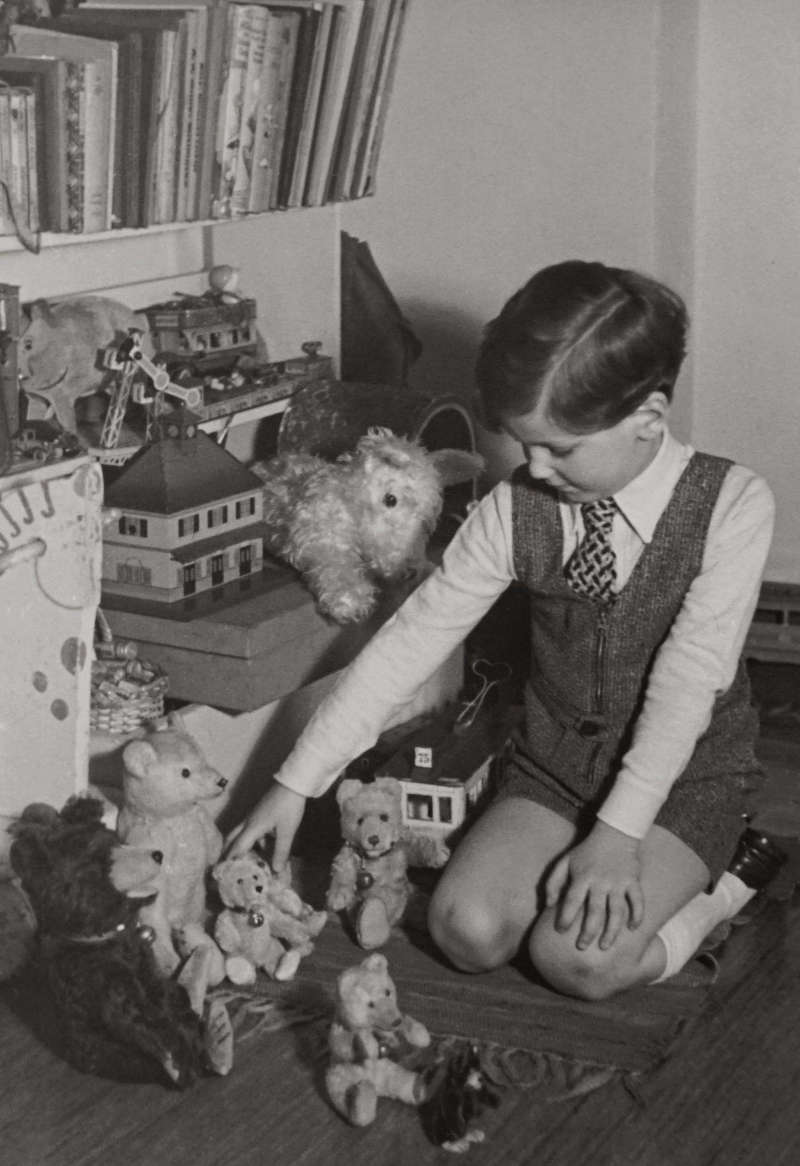Please note that while we really hope you enjoy this blog, this is not an area of expertise for us.
With that in mind, we would kindly ask that you do not contact us about any further information on this topic as we don't want to disappoint you.
Interested in antique teddy bear identification? We can help you make a start with our latest how-to guide.
Teddy bears have a fascinating origin story. It all started with President Theodore Roosevelt, who in 1902 went on a hunting trip in Mississippi. After three days, the President was the only unsuccessful member of the hunting party.
The guides tied an injured bear to a tree, but President Roosevelt refused to shoot. This led to a political cartoon in the Washington Post. Following on from this, a US candy shop owner and his wife made two stuffed toy bears and put them on display - called Teddy’s bears (i.e. President Theodore Roosevelt’s bears).
This led to the creation of the Ideal Toy Company - which went on to create the Rubik’s Cube too. Around the same time, German company Steiff, still operating today, also began making stuffed bears. These soon became known as teddy bears - and the rest is history!
Read on for our how-to guide on antique teddy bear identification.
Look for a maker’s mark
Does the bear have a label? Antique teddy bears are often from:
Search the toy for any signs of the manufacturer’s name - that’s the first part of antique teddy bear identification.
If you can find out who made it, browse through pictures of their bears online to see if you can discover the specific model and its provenance.
Feel the fur
The texture of the fur gives you a good indication of a teddy bear’s age
The texture of the fur gives you a good indication of a teddy bear’s age.
The first bears were made from mohair, which is soft and comes from Angora goats. Felt was used on the bears’ pads.
In the 1920s, silk plush came in - then sheepskin in the 30s and 40s. Cotton came next, followed by synthetic plushes in the 60s.
Work out the stuffing material
Identifying the material used for stuffing is one of the best ways to tell how old a teddy bear is:
- Pre-1915: Wood wool made of long and fine wood shavings, giving teddy bears a crunchy feel when it’s squeezed
- 1915-1940: Kapok fibre, which is known to be softer and silkier than cotton, teddies stuffed with kapok are resistant to insect attacks
- 1940-1960: Waste fabrics from textile mills - this was due to a shortage of kapok, which was needed for life jackets during WWII
- 1960s: Plastic foam, which was shredded and spongy, also made teddy bears cleanable in a washing machine
- 1970s: Polyester - this remains the most common stuffing material today

× 
Consider the changing shapes over time
Early teddy bears also had cardboard or metal discs in their joints
The very earliest bears often had a pointed nose and longer legs or arms.
For example, J.K. Farnell bears have long arms that turn upwards at the paws. The first Ideal Toy Company bears had rounded thighs and pointy toes.
Early teddy bears also had cardboard or metal discs in their joints. These were attached with metal pins, which can sometimes look rusted through the fabric. An exception is the very early Steiff bears, whose limbs did not move.
Study the bear’s face
Around 1945, creators started using moulded plastic or even rubber
The oldest teddy bears, up to the early or mid-1910s, were made with wooden boot buttons for eyes, sometimes with leather covering.
After that, makers used glass eyes - these were rounder too. The material changed again by about 1955, when plastic eyes became widespread, intended to be a safer choice for children.
Early teddy bears’ noses were stitched by hand, using dark thread. Around 1945, creators started using moulded plastic or even rubber. From about 1970, the noses were plastic.
Final thoughts: antique teddy bear identification
Rare antique teddy bears fetch high prices at auction. Some of the most coveted are scarce Steiff bears.
For example, there’s the ‘Titanic Mourning’ black teddy bear with red rimmed eyes - only 600 of these were produced after the sinking of the famous ship in 1912. One went for £91,750 at Christie’s in 2000.
There’s also the ‘Hot Water Bottle’ version, a hollow bear with a tin water bottle, going on sale in 1907 but not selling well at the time. In 2002, one was sold for £32,900 at Christie's.
We hope this information helps you to determine whether your teddy bear is antique or not.
You may also like our article on how to identify antique dolls and work out their values.
If you want to find out more about any of the items we have in stock, please don’t hesitate to get in touch.